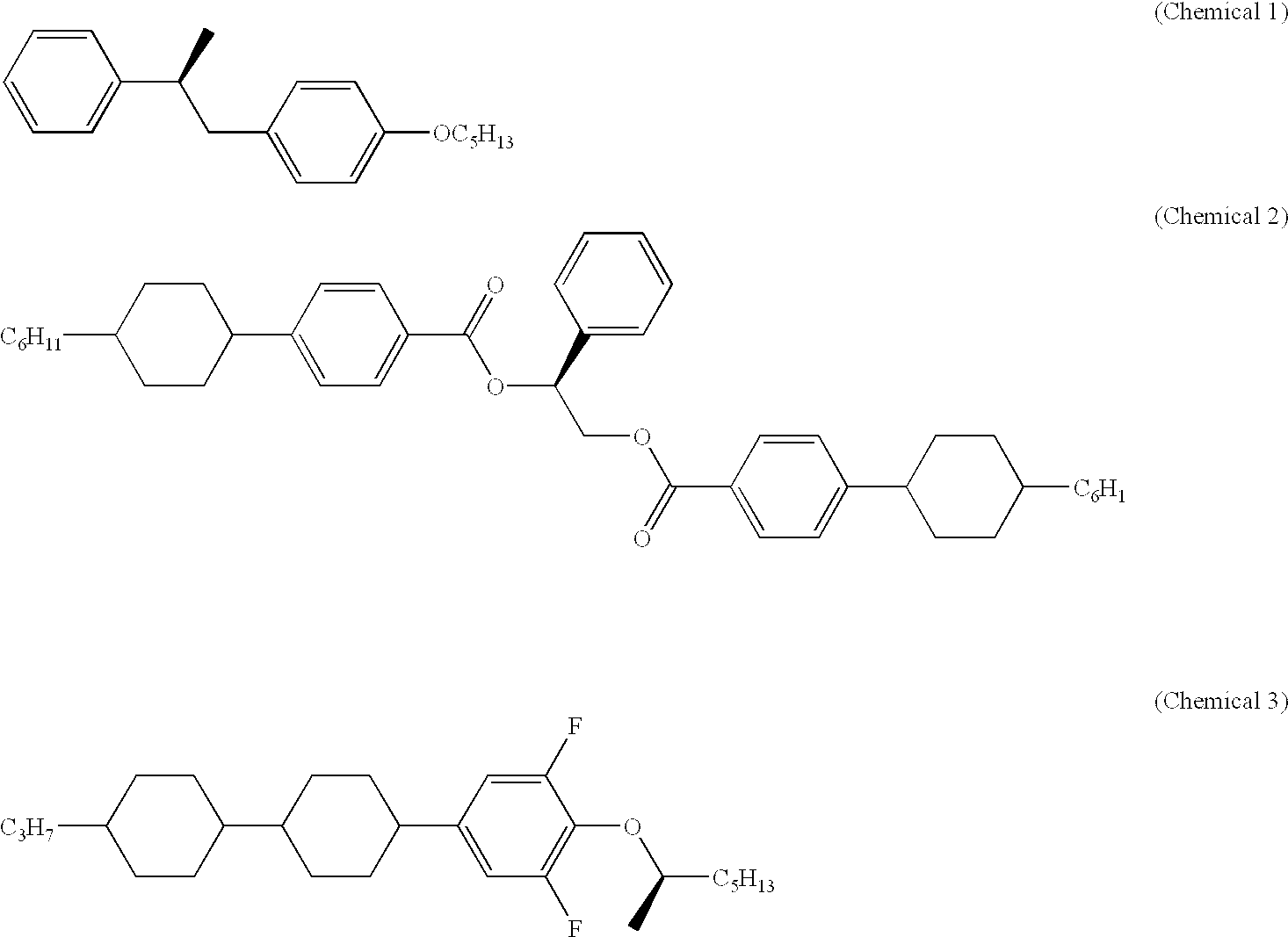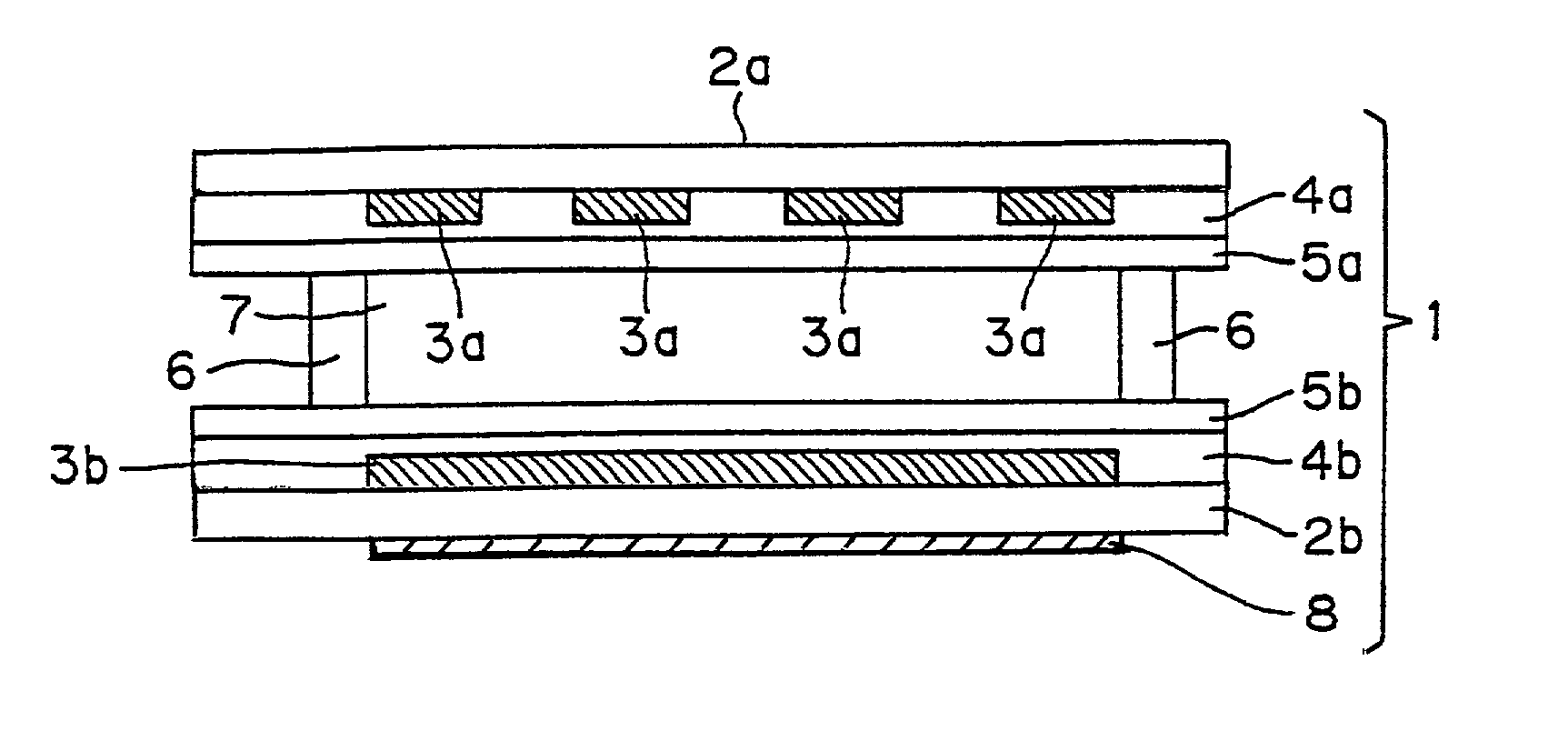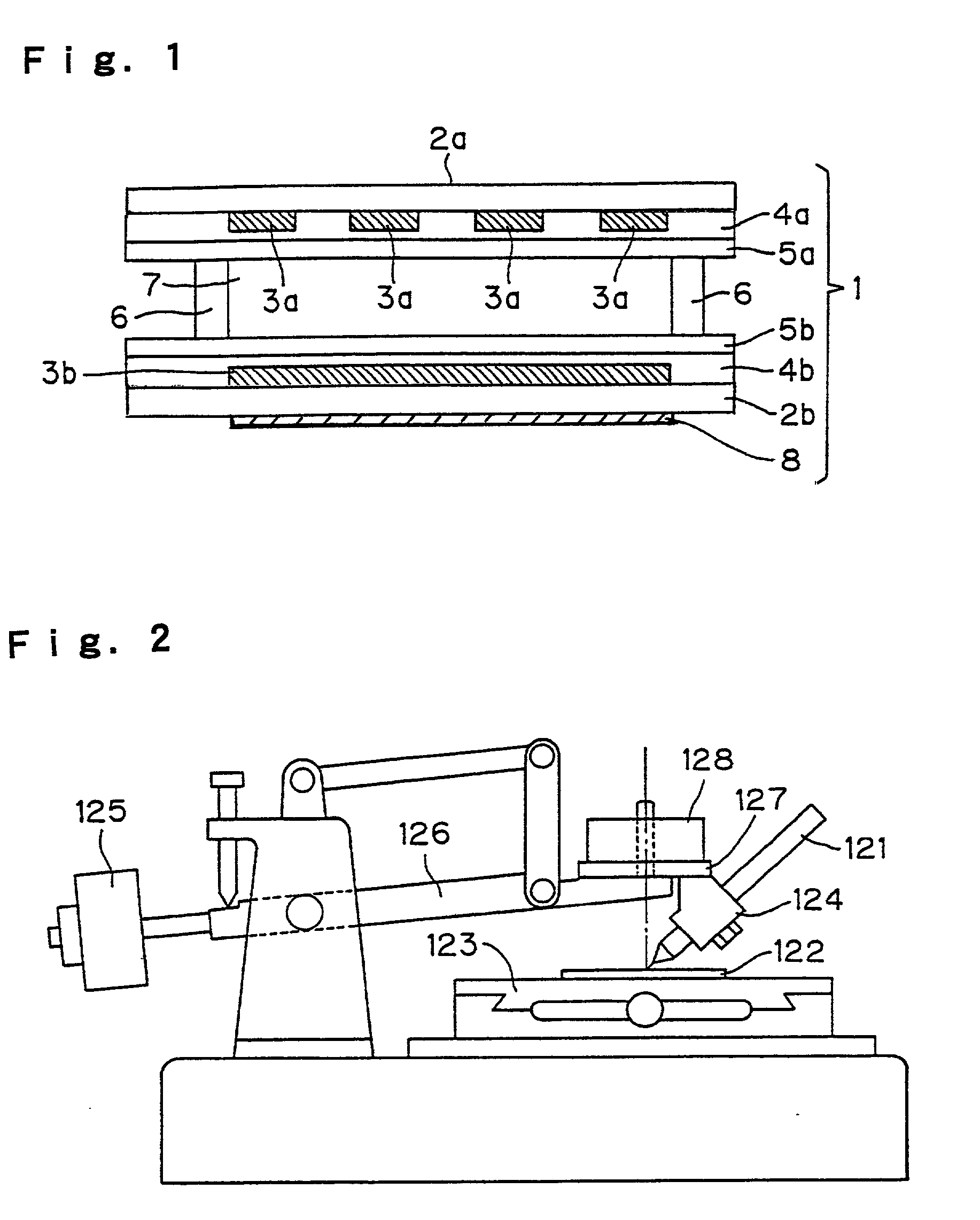Liquid crystal optical element and test method for its boundary layer
a liquid crystal optical element and test method technology, applied in liquid crystal compositions, instruments, chemistry apparatus and processes, etc., can solve problems such as image-sticking, and achieve the effect of easy confirmation
- Summary
- Abstract
- Description
- Claims
- Application Information
AI Technical Summary
Benefits of technology
Problems solved by technology
Method used
Image
Examples
example 2
[0064] A liquid crystal optical element was prepared by the same method as in Example 1 except that a solution of polyimide resin RN-1286 manufactured by Nissan Chemical Industries, Ltd. was used. The line space was 10 .mu.m and the number of stripe electrodes was 160. The surface hardness of the resin layers was "3B".
[0065] First, initialization was performed by applying a relatively high voltage to liquid crystal corresponding to each pixel to render the liquid crystal to be HO; by eliminating the voltage in such state, and applying further a voltage which rendered the liquid crystal to be FC. After the initialization, a-line-at-a-time driving was performed in one round with 160 row electrodes and 160 column electrodes to display a character of "A", and then, the application of the voltage was stopped. As a result, a state that a character of "A" in a green color (PL) was displayed in a background of black color (FC), was provided. After the liquid crystal panel displaying a chara...
PUM
| Property | Measurement | Unit |
|---|---|---|
| temperature | aaaaa | aaaaa |
| heat distortion temperature | aaaaa | aaaaa |
| thickness | aaaaa | aaaaa |
Abstract
Description
Claims
Application Information
 Login to View More
Login to View More - R&D
- Intellectual Property
- Life Sciences
- Materials
- Tech Scout
- Unparalleled Data Quality
- Higher Quality Content
- 60% Fewer Hallucinations
Browse by: Latest US Patents, China's latest patents, Technical Efficacy Thesaurus, Application Domain, Technology Topic, Popular Technical Reports.
© 2025 PatSnap. All rights reserved.Legal|Privacy policy|Modern Slavery Act Transparency Statement|Sitemap|About US| Contact US: help@patsnap.com



